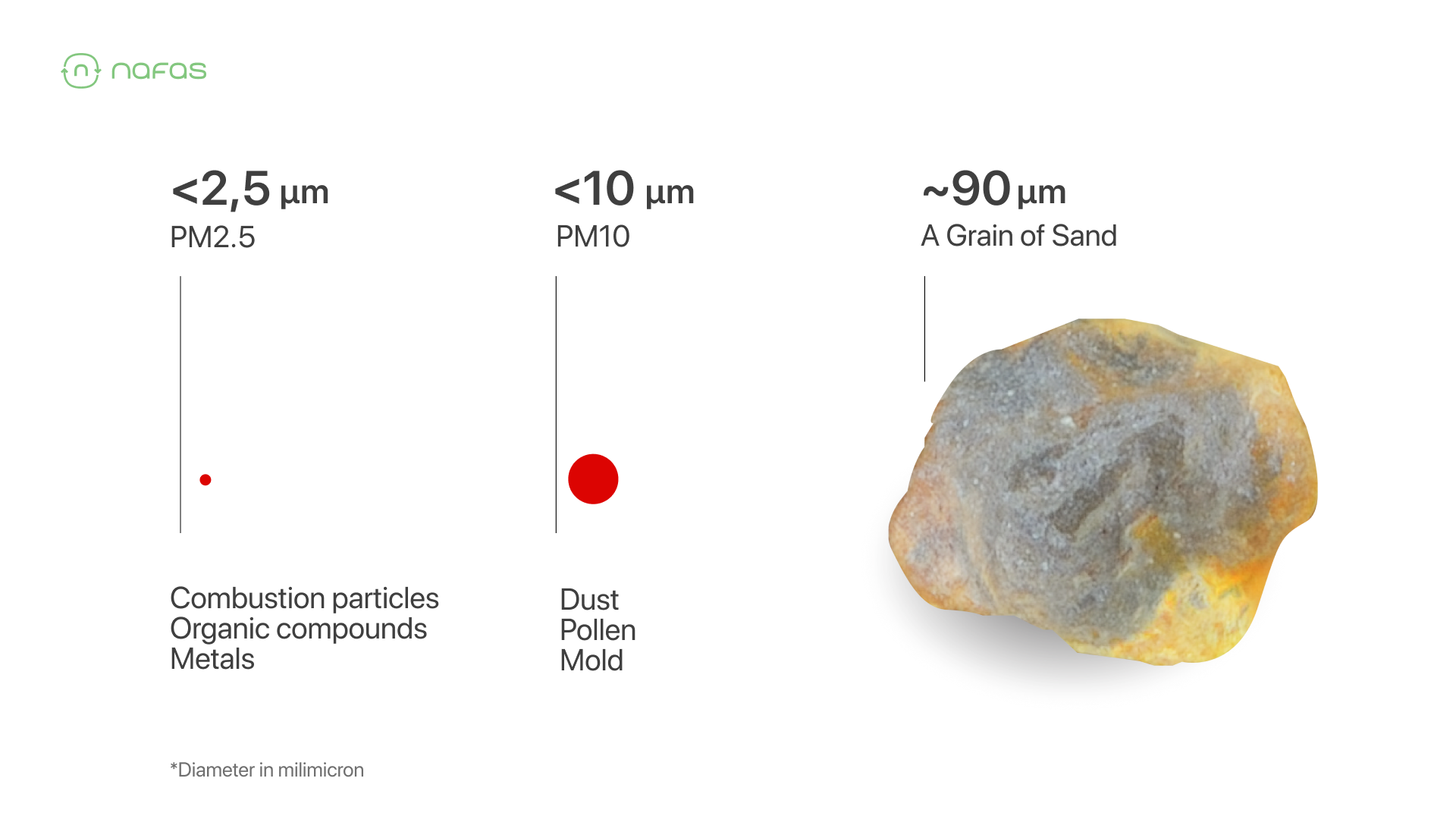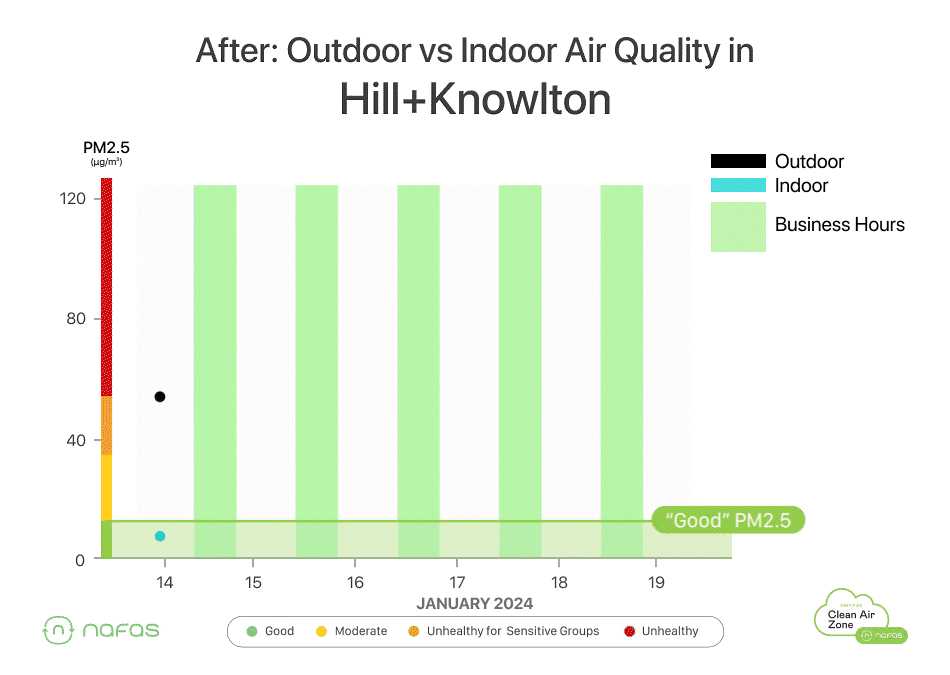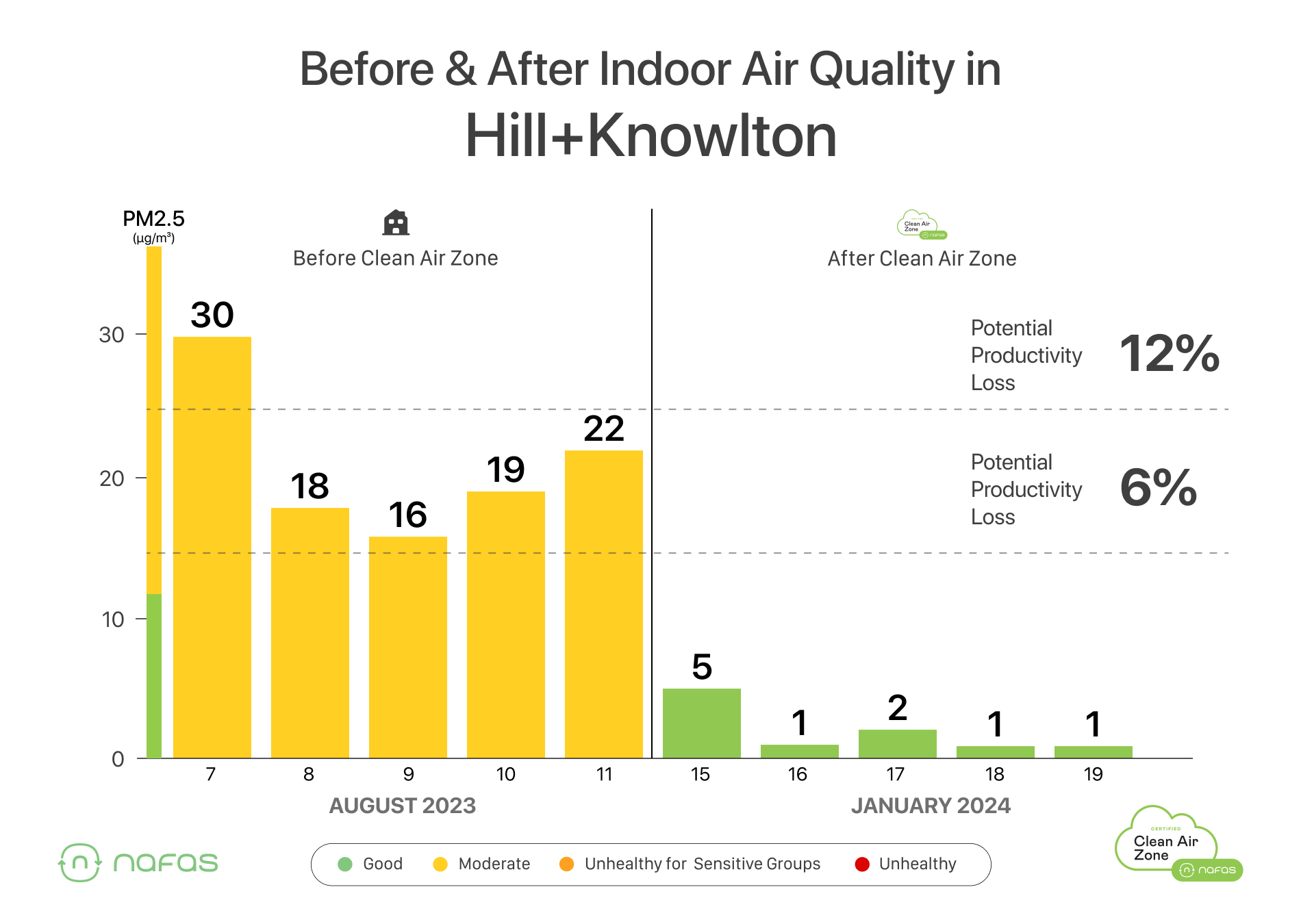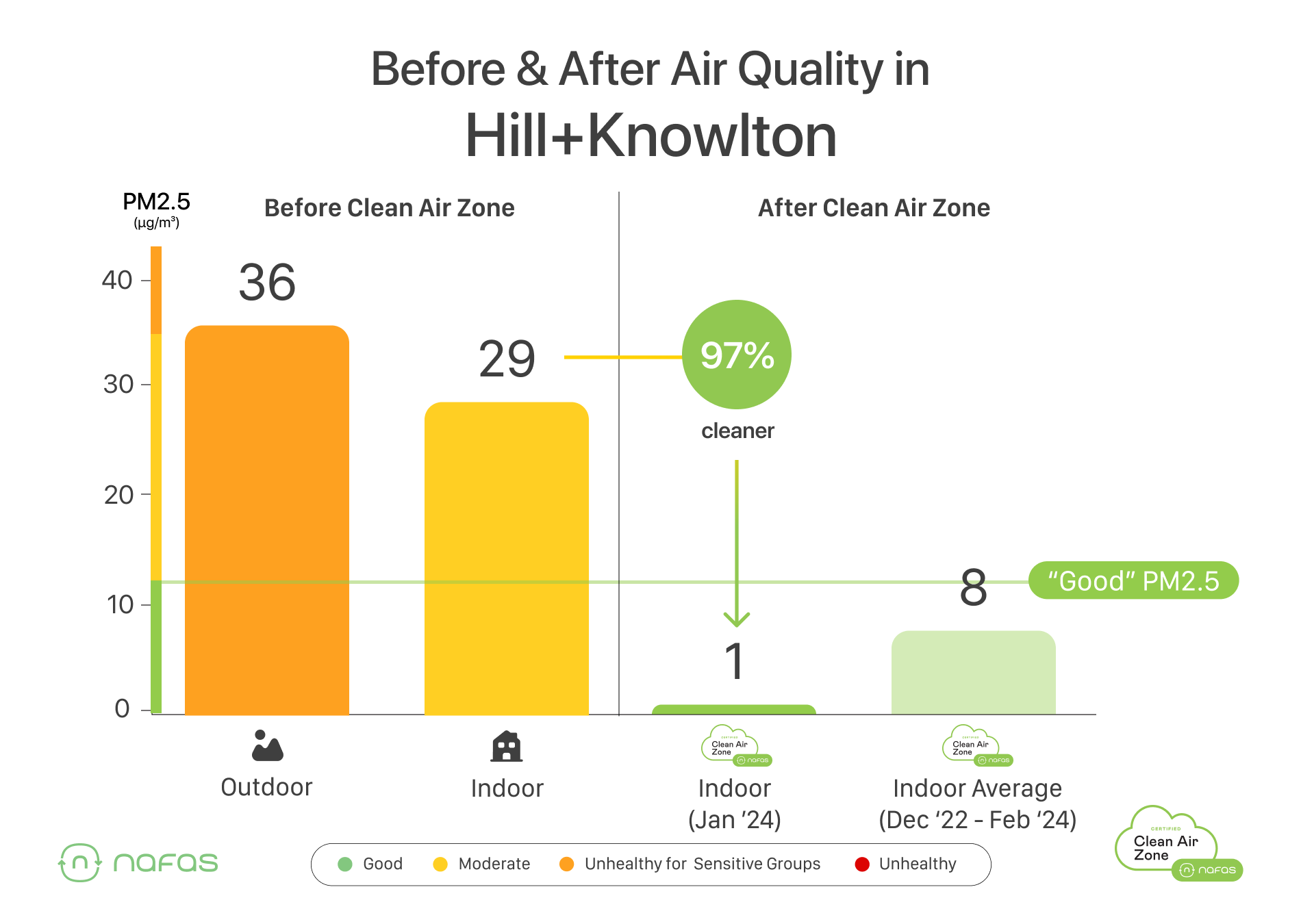LEARN / ARTICLE
Hill+Knowlton Indonesia Achieves 97% Indoor Air Quality Enhancement Through CAZ
CAZ Stories presents a series of articles shedding light on the transformative effects of Clean Air Zones in diagnosing and remedying indoor air quality challenges for businesses across Indonesia. To explore more, delve into our previous CAZ Stories:
- AC Ventures
- Mighty Minds Preschool
- Global Shipping Company
- Mazars Indonesia
- IShine Kelapa Gading
- YCAB Foundation
- New Zealand School
- Kinderfun Preschool
- HEI Schools
- Green Montessori School
- Neuro Care by Klinik Pintar
Air pollution remains a significant challenge in Jakarta, painting a troubling picture of the city's outdoor air quality. The average concentration of PM2.5 for the 2023 annual average stands at 38 µg/m3, more than twice the Indonesian National Ambient Air Quality Standard's annual average PM2.5 limit of 15 µg/m3, and over seven times the World Health Organization's (WHO) annual recommendation.
PM2.5, classified as extremely dangerous by WHO, consists of tiny particles capable of deeply penetrating our lungs. While posing a threat to the entire population, it presents a heightened risk to vulnerable groups such as children under five and adults over sixty.

The Nafas team conducted field tests, revealing that outdoor air pollution can infiltrate indoor spaces up to 100%. This poses a significant concern, particularly for residents in heavily polluted cities like Jakarta.
A recent Nafas article titled "Our Buildings Make Us Sick" emphasizes that air pollution is not limited to outdoor environments but is a considerable indoor concern. In cities with high pollution levels, indoor air quality often mirrors outdoor conditions, indicating that pollutants from outside can enter buildings, contaminating the air we breathe. This phenomenon is observed across various structures, including homes, schools, and even our offices.
How PM2.5 Affects Productivity and Cognitive Tests
In recent years, there has been a surge in research exploring the impact of the built environment on human performance. Dr. Joseph Allen, founder of the Harvard Healthy Buildings Institute at the T.H. Chan School of Public Health, has led numerous studies investigating how indoor environments can adversely affect our health.
The 2021 COGFx study, which examined the effects of indoor air quality on the cognitive performance of office workers in countries including Mexico, India, Thailand, the US, the UK, and China, yielded concerning findings. It was found that when PM2.5 levels exceeded 12 µg/m3, there was a decline in performance in four out of five cognitive tasks among office workers.
A 2016 study by the University of Southern California presented similar conclusions but in a factory setting. It revealed that for every 10 µg/m3 increase in PM2.5 concentrations above a baseline of 15 µg/m3, productivity dropped by 6%.
This study underscores the negative impact of elevated PM2.5 on short-term cognitive performance, highlighting the need for further research on other pollutants and the role of air purifiers' sound and air movement.
Responding to this critical concern, Nafas works together with Hill+Knowlton to improve indoor air quality, aiming to create a healthy working environment for employees throughout operational hours.
The Challenge: Indoor air pollution inside the office often surpasses the recommended level
Utilizing cloud-connected air quality monitors, Nafas collected extensive data on PM2.5, CO2, temperature, and humidity levels inside the office. The initial tests revealed a concerning fact: the indoor air pollution level at Hill+Knowlton office failed to maintain consistent healthy air quality during working hours.
To gain a comprehensive understanding of the problem, we initiated an analysis of areas that had not yet been designated as Clean Air Zone. Upon meticulous examination, it became evident that the indoor air quality (depicted by the blue line) consistently exceeded the PM2.5 threshold of 12 µg/m3 established by Dr. Joseph Allen, founder of the Harvard Healthy Buildings Institute at the T.H. Chan School of Public Health. This substantial difference in air quality was noticeable throughout the entire week.

Data collected in August 2023 consistently showed elevated pollution levels both indoors (illustrated by the blue line) and outdoors (represented by the black line). Pollution levels also surpassing the 'Good' air quality limit recommended by the study and WHO guidelines.
Field survey results showed a spike in PM2.5 pollution inside the office, reaching 30 µg/m³, exceeding 2 times the recommended limit, which is 15 µg/m³! With the current indoor air quality level, there's a potential of productivity loss up to 12%.

The current building infrastructure lacked the capability to filter outdoor pollutants, posing a threat to the well-being of everyone inside. This situation highlights the critical need to introduce air purifiers in the office to establish a safe and healthy environment for all employees.
The Solution: Transforming Hill+Knowlton Office into a Clean Air Zone
To address the issue of poor indoor air quality in heavily polluted cities like Jakarta, Nafas has introduced a system called Clean Air Zones. Our comprehensive ecosystem is designed to ensure healthy indoor air quality throughout business hours, incorporating precise air quality measurements, effective air purification techniques, stringent certification standards, and data-driven engagement programs involving employees.

With a subscription-based model that requires no upfront investment, enhancing office air quality has become more accessible and practical than ever before.
The Hill+Knowlton office has undergone a transformation, becoming a designated Clean Air Zone.
The Result: Significant Improvement in Air Quality at Hill+Knowlton Office

Data from January 2024 shows that the Clean Air Zone ecosystem has successfully maintained healthy air quality in Hill+Knowlton office during operational hours.
This groundbreaking initiative has resulted in a noticeable enhancement of indoor air quality and proven effective in mitigating health risks, cognitive performance, as well as productivity loss.
The Clean Air Zone ecosystem offers a convenient and effective solution to enhance indoor air quality, prioritizing the well-being of everyone at the office.
The air quality inside the Hill+Knowlton office consistently achieved a 'Good' rating over a month.
Overall, the average of indoor air quality at Hill+Knowlton office is 97% cleaner after the implementation of Clean Air Zone. Now, everyone within the office consistently enjoys the benefits of breathing clean and healthy air throughout working hours.

Monthly Air Quality Report
Through the data-driven Clean Air Zone service, Hill+Knowlton office will receive monthly reports containing air quality metrics for the previous month. The office management can share this information with all employees and other stakeholders, ensuring transparency and encouraging informed engagement.
Below is an illustration of the report that the Hill+Knowlton will receive every month:

Becoming a Clean Air Zone is Easy
To learn more about the Clean Air Zone, please email us at [email protected] or click below to sign up for a free AirScore diagnosis. Join us in our mission to establish clean air as the standard at the workplace!
